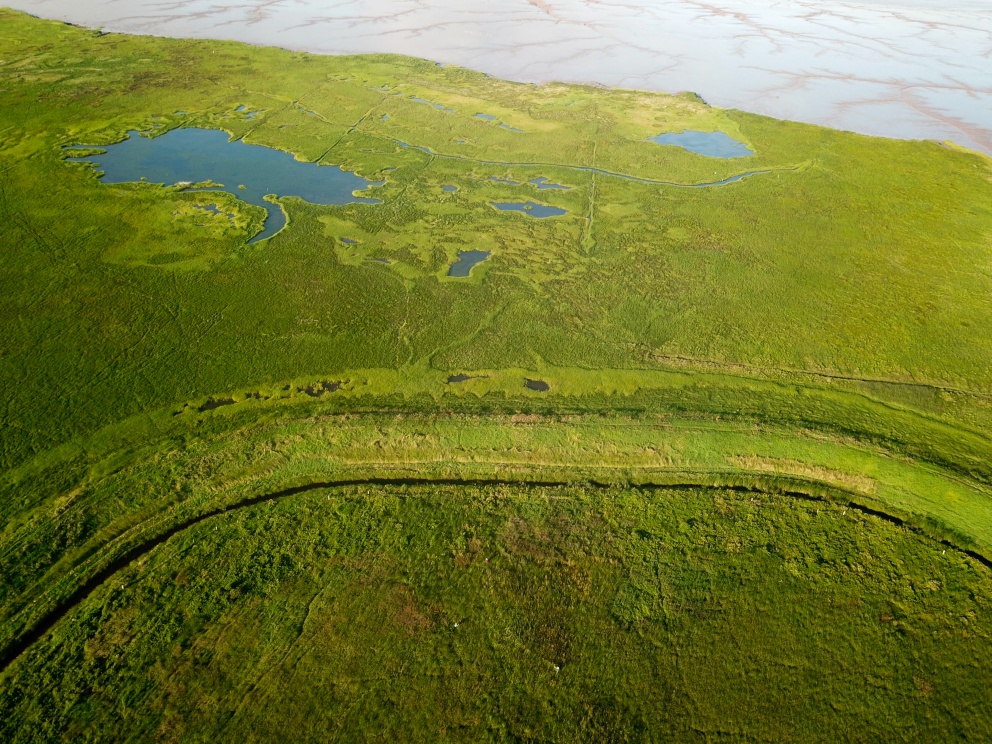Searching for a needle in a haystack?
Honourable Mention

This photo, taken with a drone, shows the mudflats of the Bay of Fundy at the top that transition abruptly into saltmarsh. The dominant linear feature in this photo is a dyke that separates the natural saltmarsh from human-made hayfields, or “dykelands”. In the 1600s, the Acadians dyked areas of saltmarsh to remove the influence of the tide on these dykelands. Compared to the saltmarsh, dykelands have very different plant composition and structural diversity. Oddly, the Acadian Nelson’s Sparrow, which has long been considered a saltmarsh specialist, successfully breeds in these dykelands. For my research, I wanted to learn more about why Nelson’s Sparrows are breeding in human-made dykelands, and what are the consequences of this novel behaviour. My results suggest that birds nesting in the human-made dykelands have higher nest success, but that there may be trade-offs in using these sites. If you squint, you may be able to see three field technicians searching for nests in the dykelands. Like searching for a needle in a haystack, except that it's the entire hayfield!